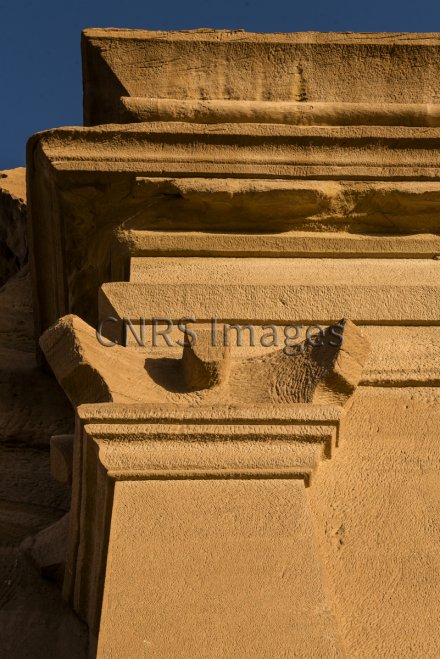Production year
2018
Use only for illustration of Laïla Nehmé's work

© Hubert RAGUET / Mission archéologique de Madâin Sâlih / CNRS Images
20190004_0023
Chapiteau corinthien nabatéen à deux registres, supporté par l’un des deux pilastres d’ante qui encadrent la façade d’un tombeau rupestre monumental du site antique de Hégra, dans la région d’Al-Ula, au nord-ouest de l’Arabie saoudite. Hégra, également appelé Madâ’in Sâlih (al-Hijr en arabe), cité nabatéenne la mieux conservée avec Pétra en Jordanie, est le premier site saoudien à avoir été inscrit sur la liste du Patrimoine mondial de l’Unesco, en 2008. Depuis 2002, un programme franco-saoudien placé sous l’égide du ministère des Affaires étrangères et de la Saudi Commission for Tourism and National Heritage (remplacée à partir de 2021 par la Commission Royale pour AlUla), explore et fouille le site. (Légende L. Nehmé, CNRS).
The use of media visible on the CNRS Images Platform can be granted on request. Any reproduction or representation is forbidden without prior authorization from CNRS Images (except for resources under Creative Commons license).
No modification of an image may be made without the prior consent of CNRS Images.
No use of an image for advertising purposes or distribution to a third party may be made without the prior agreement of CNRS Images.
For more information, please consult our general conditions
2018
Our work is guided by the way scientists question the world around them and we translate their research into images to help people to understand the world better and to awaken their curiosity and wonderment.